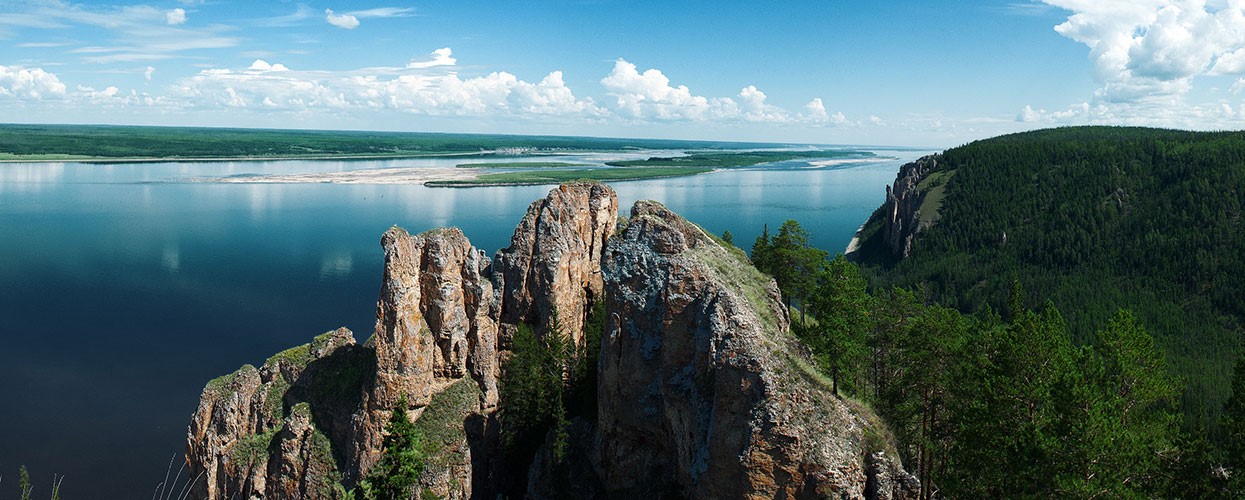Lena River

Flowing majestically through the heart of Siberia, the Lena River weaves together a tapestry of cultural heritage that stretches back thousands of years. As the eleventh-longest river in the world and the longest entirely within Russia, the Lena holds a special place in the hearts and minds of those who call its banks home. In this comprehensive exploration, we embark on a journey to uncover why the Lena River is culturally important, tracing its significance through the annals of history and the lives of the people who have relied on its waters for sustenance, inspiration, and connection.
The Mighty Lena River: A Cultural Lifeline:
Before delving into the cultural significance of the Lena River, it’s essential to understand the role it plays in shaping the identity and heritage of Siberia. Originating from the Baikal Mountains, south of the Central Siberian Plateau, the Lena begins its journey at an elevation of 1,640 meters (5,381 ft) near Lake Baikal. From there, it flows northeast across the Lena-Angara Plateau, being joined by several tributaries along the way, including the Kirenga, Vitim, and Olyokma rivers.
For millennia, the Lena River has served as a vital lifeline for the indigenous peoples of Siberia, providing water for drinking, fishing, and transportation. Its fertile banks have been home to a rich tapestry of cultures, languages, and traditions, each contributing to the unique cultural mosaic of the region. From ancient civilizations to modern-day communities, the Lena River has been a source of inspiration, sustenance, and connection for those who dwell along its shores.
Ancient Civilizations Along the Lena River:
The Lena River basin has been inhabited by various indigenous peoples for thousands of years, each leaving behind a legacy of cultural heritage that continues to resonate today. Archaeological sites along the riverbanks reveal traces of ancient settlements, ceremonial sites, and rock art dating back to prehistoric times. These ancient civilizations, including the Yakuts, Evenks, and Buryats, developed rich cultural traditions and spiritual beliefs deeply rooted in the natural environment.
For these indigenous peoples, the Lena River was more than just a source of water—it was a sacred lifeline, revered for its abundance of fish, wildlife, and fertile soil. Rituals and ceremonies held along the riverbanks celebrated the changing seasons, honored ancestral spirits, and sought protection from the elements. The Lena served as a conduit for cultural exchange and interaction, connecting distant communities and fostering a sense of shared identity among its inhabitants.
Russian Exploration and Colonization:
With the expansion of the Russian Empire into Siberia in the 17th century, the Lena River basin became a focal point of exploration and colonization. Russian explorers and traders ventured into the region in search of new lands, resources, and trading routes. Expeditions led by figures such as Yerofey Khabarov and Dmitry Laptev charted the course of the Lena and established trade outposts along its banks, paving the way for Russian settlement and economic development.
The influx of Russian settlers brought with them their own cultural traditions, language, and Orthodox Christian faith, which gradually assimilated with the indigenous cultures of Siberia. Towns and villages sprang up along the Lena, becoming centers of trade, commerce, and cultural exchange. Despite the challenges of Siberia’s harsh climate and remote location, the Lena basin thrived as a melting pot of cultures, where Russian, indigenous, and other ethnic groups coexisted and intermingled.
Cultural Traditions and Heritage:
The cultural significance of the Lena River is evident in the traditions, folklore, and artistic expressions of the people who inhabit its shores. Traditional practices such as fishing, hunting, reindeer herding, and shamanism continue to play a central role in the lives of many indigenous communities along the Lena River. Festivals, ceremonies, and celebrations held throughout the year commemorate the river’s bounty and spiritual significance, reinforcing its cultural importance to Siberian identity.
Artists, writers, and musicians draw inspiration from the natural beauty and cultural heritage of the Lena, creating works of art that capture its essence and evoke a sense of nostalgia and reverence. Literature, poetry, and folk songs celebrate the timeless rhythms of life along the riverbanks, preserving the stories and traditions of generations past for future generations to cherish.
Environmental Conservation and Cultural Preservation:
In recent years, there has been a growing recognition of the importance of preserving the cultural heritage and natural beauty of the Lena River for future generations. Conservation efforts led by governmental agencies, non-profit organizations, and local communities aim to protect the river’s ecosystem, mitigate pollution, and safeguard cultural sites of historical significance.
The designation of protected areas, such as Lena Pillars Nature Park and Ust-Lensky Nature Reserve, reflects a commitment to balancing environmental conservation with cultural preservation. Sustainable tourism initiatives promote responsible travel practices that respect the delicate balance of nature and support local communities along the Lena. By working together to protect the cultural and natural heritage of the Lena, we ensure that future generations inherit a legacy of beauty, diversity, and resilience that has endured for millennia.
Conclusion:
As we reflect on the cultural significance of the Lena River, we are reminded of its timeless importance as a symbol of resilience, connection, and heritage in the vast wilderness of Siberia. From ancient civilizations to modern-day communities, the Lena continues to inspire and unite people from all walks of life, transcending boundaries of time and space. As stewards of this precious resource, let us honor and preserve the cultural heritage of the Lena for generations to come, ensuring that its legacy endures as a source of pride and inspiration for all who call Siberia home.
Know More about the Lena River.
What are The Religious Places of the Lena River?
When Did The Lena River Basin Become a Focus?
Where is The Lena River Located?
Who Were The Key Historical Figures and Civilizations of The Lena River?
How to Reach Lena River?




